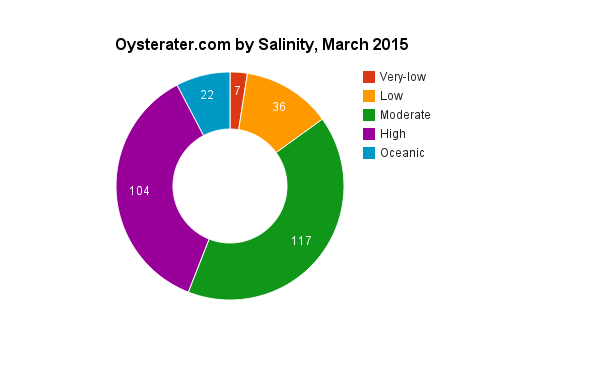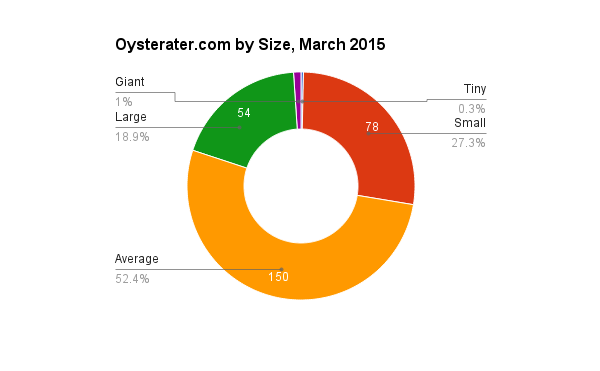A big part of the appeal of oysters is their saltiness. They are as close as you can come to eating the sea and getting away with it. Oysters pump seawater through themselves all day, so they take on the same salinity as the water they grow in. This can range from 10 parts per thousand (ppt) salt for brackish areas like the marshes of Louisiana or the upper Chesapeake Bay (where lots of freshwater mixes with seawater) to a fully oceanic 32-34 ppt for oysters grown in pure seawater. Preferences vary.

Browse oysters by salinity:
Oyster Size
In the ancient middens (shell piles) created by our native ancestors thousands of years ago (who would have been startled to see us picking through their compost heaps with such reverence), you can find oyster shells nearly two feet long. Foot-long shells are common. It takes an oyster 10-20 years to get that big. We don’t let them do that anymore. Most people prefer oysters that are 2-4 inches long (which correspond to our Small-to-Large sizes). Some prefer Giants, especially for cooking. (Oysters, being mostly water, shrink a lot when cooked.) Olympias, the only species native to the west coast, never get bigger than a fifty-cent piece; they are our only tiny oyster.

Browse oysters by size:
Want to learn more?
- Read about Oyster Cultivation
- Read about Oyster Species
New ratings